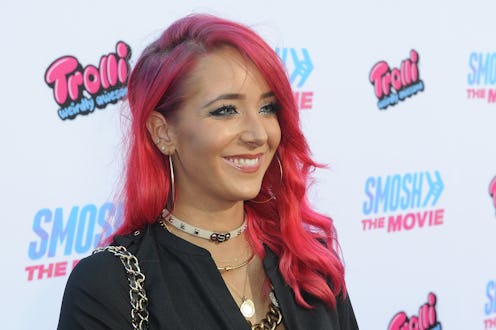If you've ever wondered how YouTubers make money, you're in luck. A pro YouTuber, Mah-Dry-Bread, put out a video that details everything you could possibly need to know about how to make money on YouTube. It turns out there's a lot going on behind the scenes. YouTubers typically work from home, and some make their entire livelihood producing content. While that's the dream for many people, it's also a challenging, often unsteady way to make a living. There are several specific nuances that you need to know about how YouTubers make money, and Mah-Dry-Bread goes through them all in depth to make sure you’re avoiding scams.
In addition to Mah-Dry-Bread's advice, Bustle consulted Maddie Raedts, Founder and CCO of IMA, a full service influencer marketing agency, for a more in depth look at how to make money on YouTube. "The most important thing is about these YouTubers, is that they have an audience that is so authentic and valuable as its completely build up by a person itself coming from an authentic and unique voice," Raedts tells Bustle over email. "The relationship between the content creator and the audience is super tight and real — this makes it very interesting for a brand or service to relate with that, because you can become part of the conversation and/or eco-system of that community and have the YouTuber tell your brands story."
Figuring out where you fit in the broader landscape of YouTube and what kind of relationship you'll have with your audience isn't just important for the sake of generating a brand for yourself, but in helping your audience connect with you and what you have to offer. But if you’re starting a career on YouTube, or have taken an interest in building up your brand on the site, you'll want to do your research to understand how it is YouTubers actually make money, to set yourself up for future success.
In the video, Mah-Dry-Bread — who specializes in gameplay and streams on YouTube, and posts videos daily — explains the financial opportunities in putting ads in your videos, the potential of getting your videos sponsored, and how many YouTubers find additional financing through Patreon. But as Raedts explains to Bustle, ads and sponsorships can go way beyond the typical ones you see at the beginning of videos, or a product shoutout. "This could be a give away, a product feature/mention in the video, a dedication video, a feature in a vlog, etc.," Raedts explains to Bustle. "But also things like event attendance/appearance, content creation for a brand, buy-outs for usage of the content."
Raedts emphasizes, though, that these sponsorships need to chosen carefully. "Of course you also have ads, affiliates and such, but the brand partnerships are definitely more lucrative as they are often a more always-on package, really making the YouTuber an ambassador for a brand," Raedts tells Bustle. "Also including his/her other channels, which is also much more effective as well as much more authentic."
In the video on the subject of how YouTubers make money, YouTuber Mah-Dry-Bread also explains that the amount each YouTuber gets paid is very dependent on a number of factors, including how much of a YouTube following the creator has, the extent of the partnership, and the brand itself. The video also warns about making sure the companies you're working with are legitimate; as with all monetary decisions in life, it's best to do your research with any company you decide to do business with, and in this case, to ask around the YouTube community with fellow creators who may have worked with the brand in the past.
But something to bear in mind throughout the process of monetizing your YouTube channel is just how important it is to stay true to yourself and your viewer base, to keep your content meaningful and your audience engaged, and to set yourself up for future success. "What is crucial in all this, is that the match between YouTuber and brand is at all times an authentic connection," Raedts tells Bustle. "[T]hat is the only way a partnership will work and that this industry will stay authentic and alive."
This post was first published on August 10, 2015. It was updated on September 18, 2019.
This article was originally published on
